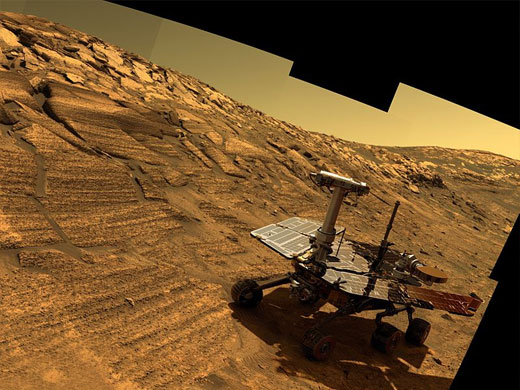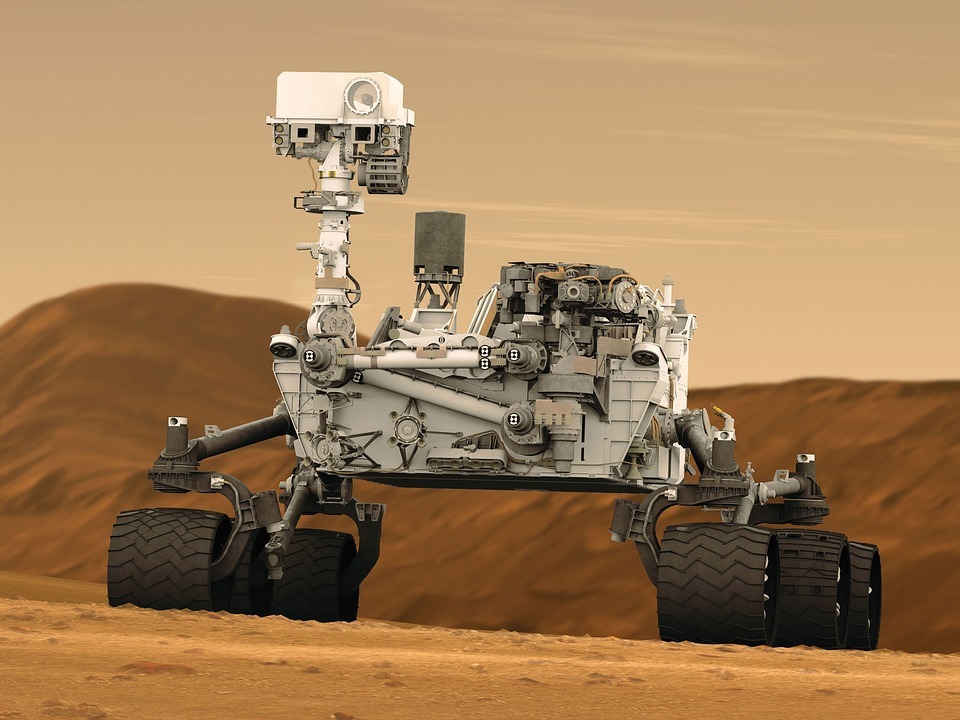NASA’s Mars Rovers – an introduction
Space technologically keeps advancing at an exponential rate. Technological advancements have led to new innovations, capabilities and expanded space exploration. The National Aeronautics and Space Administration (NASA), is owned and run by the government and has over the years been launching Mars rovers to explore the red planet. Each time they have sent a rover to the planet the data collected has continued to expand our knowledge of Mars.
In 2012, NASA successfully landed a new rover known as Curiosity on Mars in what is known as the Gale Crater. The 2.5 billion dollar, 1-ton, six-wheeled mobile Mars laboratory, was launched in November 2011 and completed its long journey and landed on the planet. The robot is nuclear-powered and the main objective is to determine the makeup of the planets land, presence of water and general environment of Mars with an eye towards a manned mission in the future. It will drill into the rocks, soil and analyze what it finds all the while relaying data back to Earth. It has been on Mars for 2382 sols, that is 2447 earth days.
The primary scientific objective of Curiosity is to determine whether mars can or ever supported life, microbial or otherwise. The secondary objective of Curiosity according to NASA is to investigate the climate and geology of the red planet. This knowledge is supposed to prepare NASA for human exploration. For instance, by learning about the current climate, they can decide if it’s safe for humans to explore its surface.
Curiosity rover is expected to achieve the scientific goals of Mars Scientific Laboratory. These include identifying organic compounds; any trails left by biological processes; investigating soil and rock formations; evaluating the process of atmospheric evolution; determining the cycling of water and carbon dioxide and measuring radiation levels that reach the surface.
The biggest Mars rover ever yet
Curiosity is the biggest rover to ever land on the red planet. It’s about the size of a car and weighs around 2000 lb. The large size has benefited scientist greatly because it has given them the opportunity to be able to load more instruments on it and with the increased size it can explore even further into the uneven terrain. It designed to travel 200 meters every day.
An elaborate landing
The landing method with this rover was changed and is more effective as compared to the other methods. When the lander approached the ground it fired rockets and hovered a few feet above the surface, before gently and carefully lowering the robot to the ground using afterburners. The landing system allowed researchers to better target the best spot to land the rover.
The most effective and technologically advanced rover to date
Like its predecessors Viking 1 and 2, Curiosity is fueled by a radioisotope thermoelectric generator or RTG for short. It provides a constant supply of power in all seasons. The generator converts the heat emitted by the radioactive source into electricity using thermocouples. The radioactive source used in Curiosity is plutonium-238 dioxide which was provided by the US Department of energy. Curiosity’s RTG, however, is a significant improvement over that of Viking 1 and 2. It’s a more flexible and compact design, that will last for 14 years and doles out 110 watts.
Curiosity is equipped with a heat rejection system (HRS) which regulates the temperature of heat sensitive components within a narrow optimal range by warming the rover up when the immediate environment is cold and rejecting heat in case the rover becomes too hot by pumping fluid through 60 meters of tubing.
Curiosity is fitted with two onboard computers that run a real-time operating system (RTOS) called VxWorks. These computers are an upgrade compared to the computers in Mars Exploration Rovers. Curiosity’s computers have 256 MB of DRAM and 2 GB of flash memory while MER computers rocked 128 MB of DRAM and 256 MB of flash memory.
Curiosity is equipped with several communication redundancies to prevent total communication blackout if individual components fail. It uses an X band transmitter and receiver to communicate directly with Earth and two UHF Electra-lite radios to talk to Mars orbiters. Mars orbiters have larger antennas than the rover, which allows for faster data transmission. It takes signals, 14 minutes to travel between Mars and Earth.
Onboard Instruments
Curiosity has equipment for detecting hydrogen: one of the constituents of water. Basically, it bombards surfaces with neutrons which slow down if they run into hydrogen. Curiosity can drill into rock formations determine how they formed over time.
If Curiosity spots any clues for organic compounds, it utilizes the Sample Analysis of Mars instrument to confirm that. This process is how it discovered methane on Mars. The rover also has high-resolution cameras that take photographs of its immediate surroundings as it navigates the Martian surface.
The Radiation Assessment Detector runs for 15 minutes after an hour. It analyzes the amount of radiation that reaches the surfaces and is absorbed in the atmosphere. This data helped NASA determine that the radiation levels were safe enough for a manned mission in the future.
There are many considerations that were made by the scientists before coming up with the main mechanism which the robot will use in analyzing many different minerals on the red planet. The digging is going to be done by a robotic arm and a tuning fork that is paired with X-ray capabilities and a sleeve which holds the soil.
The mission progress so far
On the 17th of August, The project scientist, John Grotzinger, announced at a media teleconference that the scientist and engineers behind the project have selected the first destination for the rover. The selected destination has been named Glenelg. The scientist made this choice after the successful landing of the rover gave them a variety of options on the best place to explore. The first drilling at the destination will mark a great moment in the history of the exploration of the planet.
When Curiosity made it to Aeolis Mons also known as Mount Sharp, it made thorough evaluations of ground layers looking for any signs of habitable surroundings. The objective was to learn how the Martian climate changed from damp and moist to today’s arid and desiccated conditions.
In 2013, Curiosity successfully proved that Mars had habitable zones that could have supported life. It found organic building blocks of life which are not evidence for life, but it was an exciting discovery nonetheless.
In mid-2017, NASA remotely updated Curiosity’s software that allows it to pick target objects on its own. This marked the first time artificial intelligence was installed on a distant rover.
It will be exciting to watch over the coming years, the exploration and data collected by Curiosity. Who knows what might be discovered and how it will impact our future exploration of Mars.

